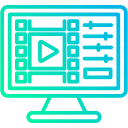The Challenges of Managing Multiple Training Platforms
Modern organizations increasingly adopt a variety of training tools to address diverse learning needs. However, this approach often leads to considerable challenges that can hinder effective training delivery. One major issue is administrative complexity: managing multiple platforms requires extensive coordination, increases workload for HR and training teams, and raises the risk of inconsistent data tracking. This fragmentation can cause duplicated efforts, scheduling conflicts, and difficulties in maintaining a cohesive training strategy.
Furthermore, juggling several disparate tools can result in learner disengagement. When employees must navigate different interfaces, login credentials, and content formats, their motivation to participate declines. Such fragmented learning experiences often undermine focus, leading to reduced engagement and lower retention rates.
Additionally, utilizing multiple platforms can diminish training effectiveness. Without seamless integration, learners may encounter redundant or conflicting content, causing confusion and negatively impacting learning outcomes. Managers also face challenges in monitoring progress and evaluating training impact accurately when data resides across various systems.
In summary, while multiple training tools aim to diversify educational options, they frequently introduce administrative burdens, disengagement, and reduced training efficacy. These issues highlight the need for integrated solutions that streamline learning management and enhance user experience.
Start Scaling Your L&D Today with Free Tools
Unlock the Potential of Free Tools to Revolutionize Your Learning Strategy!
Why a Centralized Free LMS Is the Solution
Consolidating training resources into a single, free Learning Management System (LMS) offers strategic advantages for organizations seeking to optimize workforce development. Centralization enables companies to manage training content efficiently, realize cost savings, and provide a more seamless user experience. This transition aligns with the ongoing trend of digital transformation in organizational learning.
Cost Savings and Resource Optimization
Adopting a unified, free LMS reduces costs associated with multiple systems, licensing fees, and administrative efforts. Organizations no longer need to invest in various proprietary platforms, which often involve complex licenses, maintenance, and upgrades. A consolidated system simplifies content management, eliminates redundancies, and reallocates resources toward content creation and employee engagement. Industry reports, such as those from EdTech Magazine, indicate that businesses centralizing their e-learning platforms can see up to a 30% reduction in overall training expenses.
Easier Access and Better User Experience
A centralized LMS provides a single portal for accessing all training materials, simplifying login processes and reducing confusion. This ease of access boosts engagement and makes it simpler for employees to locate, complete, and track their learning activities. Modern LMS platforms offer user-friendly interfaces, mobile responsiveness, and personalized dashboards—features that significantly improve satisfaction and productivity. According to Brandon Hall Group research, such intuitive platforms lead to higher course completion rates and enhanced skill development.
Seamless Delivery and Accurate Tracking
With centralized training resources, organizations can deploy consistent content across departments and regions, maintaining high standards and compliance. The integrated LMS enables real-time tracking of learner progress, assessments, certifications, and compliance records. This transparency supports proactive interventions and strategic planning, ensuring organizational learning objectives are met efficiently.
Emerging Trends in Unified LMS Adoption
Several industry trends are driving the shift toward free, centralized LMS solutions. The rise of remote and hybrid work models demands accessible, cloud-based platforms. Open-source options like Moodle and Canvas offer customizable, cost-effective alternatives to proprietary systems. Moreover, the emphasis on digital transformation and lifelong learning encourages scalable, integrated LMS platforms. Gartner’s research notes that approximately 70% of organizations plan to invest more heavily in centralized LMS solutions to support digital workspaces.
In conclusion, moving to a single, free LMS is a strategic decision that delivers cost efficiencies, improves user access, and enhances organizational agility. As technology advances and workforce expectations evolve, adopting integrated LMS platforms remains vital for effective talent development.
🚀 Ready to See Paradiso LMS in Action?
Let’s show you how Paradiso LMS can work for you.
Features to Look for in a Free Centralized LMS
Choosing the right free LMS requires understanding its core functionalities to ensure it meets your organization’s needs. A reliable platform should facilitate efficient content delivery, provide comprehensive tracking, be accessible across various devices, and support integration with other systems. Let’s explore these essential features to guide your selection process.
Content Delivery Capabilities
An effective LMS must support various content formats such as videos, PDFs, SCORM-compliant courses, quizzes, and interactive modules. Ease of uploading and organizing materials is crucial, along with features for creating or integrating assessments and certificates. These elements motivate learners and enable tracking of their progress effortlessly.
Robust Tracking and Reporting
The ability to monitor learner activity, course completion, and assessment results is vital. Look for platforms offering detailed reports and analytics. Such features help evaluate training effectiveness, identify gaps, and inform improvements—key for maintaining accountability and achieving educational goals.
Device Compatibility and Accessibility
Leverage mobile-responsive designs to ensure seamless access across desktops, tablets, and smartphones. A reliable free LMS should also adhere to accessibility standards like WCAG, allowing learners with disabilities to participate fully. Ensuring broad accessibility enhances engagement and inclusivity.
Integration Capabilities
Suppose you need to connect your LMS with other tools such as HR management systems, webinar platforms, or content repositories. In that case, compatibility with standards like SCORM, xAPI, or LTI is essential. These integrations enrich learning experiences, expand functionalities, and reduce administrative burdens, supporting scalability and long-term growth.
By emphasizing comprehensive content delivery, advanced tracking, device compatibility, and system integration, you can select a reliable free LMS suited for current needs and future expansion. The goal is to find a platform that is dependable, scalable, and capable of providing high-quality online learning at no initial cost.
Paradiso LMS: Your Ultimate Free Centralized Learning Solution
Paradiso LMS is a leading learning management system designed to streamline training management through innovative and flexible features. Recognized for its comprehensive capabilities, Paradiso LMS empowers organizations to deliver engaging, personalized learning experiences tailored to their unique requirements.
Core Features of Paradiso LMS
At its core, Paradiso offers user-friendly course creation tools that support multimedia content, making content development straightforward. Its detailed reporting and analytics enable administrators to monitor learner progress, identify knowledge gaps, and measure training impact in real time. Features such as automated enrollment, certification management, and mobile access ensure a seamless experience for users across devices, enhancing engagement.
Customization and Flexibility
One of Paradiso LMS’s distinct advantages is its high degree of customization. The platform allows extensive branding options, enabling organizations to tailor the interface to their corporate identity. It also supports configurable workflows, integration with HR and CRM systems, and tailored user roles, creating a bespoke learning environment aligned with specific business needs. This adaptability makes Paradiso LMS suitable for diverse industries, from healthcare to manufacturing.
Real-World Success Cases
Many organizations have benefited from Paradiso LMS’s features. For instance, a global retail chain used the platform to implement uniform onboarding programs across multiple locations, ensuring consistent training standards and reducing administrative workload. In the manufacturing sector, a client increased employee compliance rates through live instructor-led sessions integrated with automated reminders and tracking tools. These success stories demonstrate how Paradiso enables effective training management while boosting operational efficiency.
Overall, Paradiso LMS’s powerful, customizable features and proven track record position it as a trusted solution for organizations aiming to simplify and elevate their training processes.
Manage all your training in one place – simple, smart, and efficient
Streamline learning and boost results with a centralized LMS.
Making the Switch: Practical Steps to Implement a Centralized LMS
Transitioning to a centralized free LMS offers a valuable opportunity to enhance training effectiveness and reduce costs. However, a successful switch requires careful planning, data migration, and strategic implementation. This section provides pragmatic steps to facilitate a smooth transition and maximize your LMS benefits.
Developing a Transition Strategy
Begin by defining clear objectives—such as improving compliance or streamlining onboarding. Conduct an inventory of existing courses, certifications, and performance records, then evaluate their relevance for migration. Prioritize essential content for phased deployment, allowing continuous improvement. Setting realistic timelines and communicating these plans to stakeholders fosters buy-in and reduces resistance.
Preparing and Migrating Data
Effective migration starts with extracting accurate data from legacy systems, cleansing it to remove outdated or duplicate records, and standardizing formats for compatibility. Many free LMS platforms support bulk data uploads using CSV or Excel files. Testing the migration process in a sandbox environment helps identify issues without disrupting ongoing training. Once tested, execute the full migration, maintaining backups to prevent data loss.
Strategies for Long-term Success
Leverage platform features such as gamification, social learning forums, and automated notifications to boost engagement. Regularly analyze usage data and collect learner feedback to optimize course materials and delivery. Integrate your LMS with HR and performance management systems to streamline workflows. Encourage leadership involvement and recognize learner achievements to sustain motivation. For platforms like Paradiso LMS, utilizing built-in analytics and automation can dramatically enhance training outcomes.
A strategic, well-executed migration combined with continuous improvement practices will ensure you realize the full potential of your free LMS for long-term organizational growth.
Conclusion & Call to Action
Implementing a centralized free LMS is a transformative step toward more efficient, engaging, and scalable training programs. By consolidating resources, organizations can reduce costs, improve learner experiences, and achieve better learning outcomes. Embracing platforms like Paradiso LMS offers a customizable, reliable, and cost-effective solution to meet evolving training needs.
Now is the ideal time to evaluate your current learning infrastructure, identify gaps, and explore the benefits of a centralized LMS. Take proactive steps—assess your requirements, select a suitable platform, and develop a strategic plan for migration and implementation. Empower your organization with a scalable learning system that supports continuous growth and development.
Get started today! Contact our team or explore Paradiso LMS to discover how a free, centralized learning platform can elevate your training initiatives and drive organizational success.












